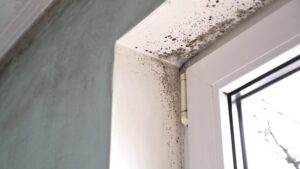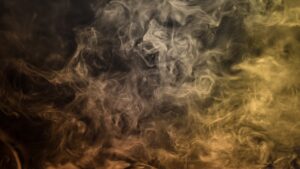Storm damage can wreak havoc on homes, causing everything from structural damage to severe flooding. One of the biggest concerns after such disasters is the risk of mold growth, which can happen quickly in water-damaged areas. Mold not only damages property but also poses serious health risks, especially for those with allergies or respiratory issues. Therefore, taking immediate and effective steps to prevent mold after storm damage is crucial.
What Causes Mold Growth After a Storm?
Mold thrives in environments that are damp, warm, and poorly ventilated. After a storm, particularly one that brings heavy rain or floods, moisture can seep into your home. Once inside, if that moisture isn’t removed quickly, mold spores—naturally present in the air—begin to settle and grow on various surfaces, including walls, ceilings, floors, and even furniture.
Excess Moisture
To keep mold out of your house, you’ll need to control moisture. Rainwater, flooding, or even a broken pipe after a storm can saturate materials in your home like wood, drywall, and carpets. These materials retain moisture, which mold needs to grow.
High Humidity Levels
After a storm, the air can become very humid, especially if ventilation is poor. Mold thrives in environments with a relative humidity above 60%.
Lack of Proper Ventilation
Inadequate airflow hinders the drying process and encourages mold growth. Areas like crawlspaces are often prone to mold for this reason.
Delayed Clean-Up
The longer you wait to address water damage, the higher the chance mold will grow. Mold can develop within 24-48 hours in the right conditions. Contacting professional storm damage restoration experts like West Coast Fire and Water must be a top priority
Why Mold Growth Is Dangerous
Mold growth isn’t just unsightly or damaging to your home; it can also have a major impact on health. Among the dangers of mold growth in your home, some molds can release toxic spores that lead to respiratory problems and other health issues.
Health Effects of Mold Exposure:
- Respiratory infections or difficulty breathing
- Allergic reactions, including sneezing, itchy eyes, and rashes
- Aggravation of asthma or chronic lung conditions
- Long-term exposure can lead to more serious health complications, including immune system issues
Immediate Steps to Take After Storm Damage to Prevent Mold
The first 24-48 hours after storm damage are critical in preventing mold growth. While it can be dangerous to remove mold yourself, following these steps can help you stop it from growing in the first place:
Assess the Damage Safely
Before entering your home, ensure it’s safe. If there’s extensive water damage, structural damage, or electrical hazards, contact a professional first. Once inside, inspect the entire home, including basements, attics, and any crawl spaces, for signs of water intrusion or standing water.
Remove Standing Water
Use a wet vacuum, sump pump, or even a mop and bucket to remove any standing water. The quicker you can eliminate water from your home, the less chance mold has to grow. Focus on areas that trap water easily, such as carpets, rugs, and upholstery.
Dry Everything Out
Drying out your home is critical. Open all windows and doors to allow airflow, and use fans or dehumidifiers to help remove moisture from the air. If the storm caused damage to your HVAC system, rent or purchase additional fans and dehumidifiers to speed up the drying process.
Remove Damaged Materials
Unfortunately, not everything can be saved after storm damage. Carpets, padding, insulation, drywall, and any porous materials that have been soaked need to be removed. These materials are likely to harbor moisture and encourage mold growth if left untreated.
Clean and Disinfect
Once the damaged materials are removed and the space is drying out, clean all remaining surfaces with a disinfectant solution. Mold spores can start growing on surfaces that aren’t thoroughly cleaned. Use a solution of water and detergent, or a mix of one cup of bleach in a gallon of water, for non-porous surfaces like walls and floors.
Long-Term Mold Prevention Tips After Storm Damage
While immediate cleanup is essential, long-term mold prevention requires taking additional steps to ensure your home stays mold-free.
Keep Humidity Levels Low
Keep your home’s indoor humidity level below 50% to prevent future mold growth. Consider installing a dehumidifier, especially in areas like basements or bathrooms that tend to be more humid. A hygrometer can help you measure humidity levels in your home.
Proper Ventilation
Adequate ventilation, particularly in areas prone to moisture, is essential for dealing with an preventing mold in your home. Use exhaust fans or open windows when cooking, showering, or doing laundry to reduce humidity buildup.
Waterproofing Solutions
If your home is in a flood-prone area, take steps to waterproof your property. This might include installing a sump pump, sealing basement walls, or raising the level of your foundation. Regularly inspect your roof, gutters, and downspouts to ensure they are properly directing water away from your home.
Regular Inspections
Inspect your home regularly for signs of water damage. Pay attention to any leaks or moisture build-up in the attic, basement, or walls. Mold often grows in hidden areas, so use a flashlight to inspect dark corners, under sinks, or behind large pieces of furniture.
When to Call a Professional
If storm damage has caused significant water damage, or if mold has already started growing, it’s crucial to contact a professional restoration company like West Coast Fire & Water. Our team has the expertise and equipment to:
- Quickly remove standing water
- Thoroughly dry out your home
- Safely remove mold-contaminated materials
- Test for hidden mold growth
- Restore your home to a safe, healthy condition
Storm Damage, Mold Remediation – West Coast Fire & Water
If you need professional help or advice, West Coast Fire & Water is here for you. Our expert team is equipped to handle water damage, mold removal, and storm damage repair in Santa Rosa and the surrounding area. Don’t wait for mold to become a problem—contact West Coast Fire & Water today or give us a call at 707-462-5326 for a consultation and fast service.



